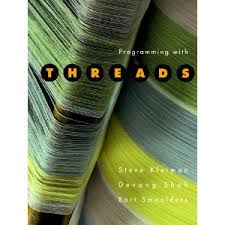Threads Primer: A Guide to Multithreaded Programming
Introduction
In the realm of modern computing, the pursuit of higher performance and responsiveness often leads developers to explore the power of multithreading. By breaking down tasks into smaller, concurrent threads of execution, applications can leverage multiple CPU cores or virtual processors to maximize efficiency. However, multithreading, while offering significant benefits, also introduces complexities that require careful consideration. This white paper aims to provide a comprehensive overview of multithreading concepts, its advantages, potential pitfalls, and best practices.
Understanding Threads
- What is a Thread? A thread is the smallest unit of execution within a process. It shares the same memory space with other threads within the process, allowing for efficient communication and data sharing.
- Process vs. Thread A process is an independent execution environment with its own memory space. Multiple threads can exist within a single process, sharing resources like memory and file handles.
- Multithreading vs. Multiprocessing Multithreading involves running multiple threads within a single process, while multiprocessing involves running multiple
Advantages of Multithreading
- Improved Performance: By distributing tasks across multiple threads, applications can take advantage of multiple CPU cores or virtual processors, leading to significant performance gains.
- Increased Responsiveness: Multithreading allows applications to perform background tasks concurrently, preventing the main thread from becoming unresponsive.
- Efficient Resource Utilization: By utilizing multiple threads, applications can make better use of system resources, such as CPU and memory.
Challenges of Multithreading
- Concurrency Issues: Multithreading introduces the risk of race conditions, deadlocks, and other concurrency issues that can lead to unpredictable behavior and program crashes.
- Synchronization Overhead: Coordinating the execution of multiple threads requires synchronization mechanisms like mutexes, semaphores, and monitors, which can add overhead to the application.
- Complexity: Multithreaded programming can be significantly more complex than single-threaded programming, requiring careful design and testing to ensure correctness and reliability.
Multithreading Programming Techniques
- Shared Memory Model: Threads within a process share the same memory space, allowing them to communicate and synchronize through shared variables.
- Message Passing Model: Threads communicate by sending and receiving messages, often using a message queue.
- Synchronization Mechanisms:
- Mutexes: Mutexes provide exclusive access to a shared resource, ensuring that only one thread can access it at a time.
- Semaphores: Semaphores control access to a limited number of resources, allowing a specified number of threads to access the resource concurrently.
- Monitors: Monitors provide a higher-level synchronization mechanism that encapsulates shared data and the operations that can be performed on it.
Best Practices for Multithreaded Programming
- Keep It Simple: Start with simple multithreading patterns and gradually increase complexity as needed.
- Identify Parallel Tasks: Carefully analyze the application to identify tasks that can be parallelized without introducing significant overhead.
- Choose Appropriate Synchronization Mechanisms: Select synchronization mechanisms that are suitable for the specific use case and minimize performance overhead.
- Test Thoroughly: Rigorously test multithreaded applications under various load conditions to identify and fix concurrency issues.
- Consider Thread Pools: Thread pools can help manage thread creation and destruction efficiently.
- Use Thread-Safe Libraries: Utilize thread-safe libraries and data structures to avoid common concurrency pitfalls.
- Profile and Optimize: Use profiling tools to identify performance bottlenecks and optimize the code accordingly.
Conclusion
Multithreading is a powerful tool for improving application performance and responsiveness. However, it requires careful consideration and implementation to avoid potential pitfalls. By understanding the core concepts, challenges, and best practices, developers can effectively leverage multithreading to build robust and efficient applications.
References
Additional Considerations
- Thread Safety: Ensure that shared data structures and operations are thread-safe to prevent data corruption and race conditions.
- Thread Local Storage: Use thread-local storage to store data that is specific to each thread, avoiding the need for synchronization.
- Asynchronous Programming: Consider asynchronous programming techniques, such as futures and promises, to improve performance and responsiveness without the complexity of traditional multithreading.
- Performance Profiling: Use profiling tools to identify performance bottlenecks and optimize the code for multithreading.
By following these guidelines and staying up-to-date with the latest advancements in multithreading technology, developers can harness the full potential of multithreading to create high-performance and responsive applications.



